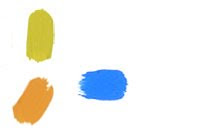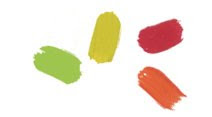Friday, February 26, 2010
About Solitude
Painter Mary Cassatt said: "I am independent! I can live alone and I love to work.” While I am sure there are some exceptions, visual artists and writers work best in solitude. I had the glorious experience some years ago of spending a month at Yaddo, the artists’ retreat in upstate New York. The painters and sculptors in the group were given large, well lighted studio spaces and separate lodging. The writers had a bedroom and some kind of office to work in. Our phone calls were filtered, only emergencies allowed through; otherwise messages were relayed when we came to dinner. Lunch was left on the doorstep of our workplaces without so much as a knock on the door. Lively conversation at dinner was the reward after a silent day. Yup, it was glorious.
When I first started painting full time I turned off the phone during the day and made abundantly clear to friends and family that daytime visits were discouraged. I have since learned to keep the phone on and unless the call brings disturbing news, I can slip back to work with ease. I love solitude. And I love silence. I rarely turn on the radio when I am in the studio. I become so submerged in the work that the phone or doorbell will cause an unpleasant jolt. But removing the possibility of that connection to the world changes the solitude to loneliness.
Writer Alan Watts said: “I owe my solitude to other people.” I don’t know if he was talking about being friendless or if it was gratitude to those who did not intrude. Anthony Burgess was clear: "To be left alone is the most precious thing one can ask of the modern world." It takes all kinds.
The image above is a partial view of my worktable as it looks now. I am assembling small collage paintings for the upcoming open studio event in Humboldt County. They are also destined for the new website I plan to have up and running this summer. To be announced.
Friday, February 19, 2010
About the Craft of Art
A dear friend, now departed, with whom I enjoyed thirty years of arguing about art related topics, said that technique could be a trap for the painter. It was long after that conversation that I began to understand what he meant.
There is technique which is about skill in using the materials of choice and then there is vision. What Richard meant was that virtuosity with paint, the ability to make the medium produce the intended effect, on its own could be boring. The skill had to support the vision and be subordinated to it.
Last night I watched the skaters vying for Olympic medals and realized that the same was true there. One of the athletes had something above the great skill he exhibited. I will risk calling it heart. It is what I saw in the show I mentioned last week of art and artifacts of Byzantium at the Metropolitan. There was something more there than the craft; it was alive with the involvement of the persons who created it. I believe that what makes art “art” is that power to connect the viewer with the maker. That connection is the art. Cellist Yo Yo Ma said it was “the inner life of one to that of another”.
I found this at a discussion forum about music:
“I was listening to a singer the other day belt out a song with a terrific technique — great vocal control — and was left impressed and yet bored. Just no magic. Sometimes great ability can even just be irritating. This is often the case with instrumentalists in guitar and banjo too. I am always impressed by great technical skill in a player — how can you not be? However, what really is exciting to me is how a few musicians filter great technique — or maybe even not such great technique — through their personality and produce magic: an exhilaration, a deep sense of satisfaction…”
Of course there is no art without craft, and craft without art is craft, a demonstration of skill.
The image above is Petunia Trio, 2005, Acrylic and Mixed Media on Museum Board, 16.5 x 12 each.
Friday, February 12, 2010
About the Price of Art
Puzzled by the sale of Alberto Giacometti’s Walking Man for one hundred and four million dollars, I read all the NYTimes articles I could find. What I can’t get a grip on is what this kind of money has to do with the sculpture. Does the new owner really like it? Is that why he bought it? The previous owner was a bank, which I imagine saw the sculpture as a good investment. Damn right. I know enough about the creative process to be sure that Giacometti wasn’t thinking about the price this work would bring while he was working on it — even though it was a commission for a public venue. I know an honest piece of work when I see it.
This caught my attention: “Money is ready to flow as never before. But the ups and downs of the bidding pattern, not clearly connected with the intrinsic merit of the works being offered, indicate that the market remains haphazard…” Another Times article noted that some of the works that sell for these huge amounts are not the artists’ best work: “A steep £4.4 million was paid for Matisse’s picture of a woman asleep on a couch done around 1917. The rendition of the reclining figure is not immune from clumsiness and the maroon band spreading across most of the wall above the woman is unfortunate. The sketch in Conté crayon of a seated boy by Seurat shot up to £1.94 million despite the confused interpretation of the figure. Oddly, a deeply poetic sketch by the same Seurat, was unsold as the hammer fell at £220,000. One of Max Liebermann’s finer landscapes, painted in 1919, merely matched the low estimate at £241,250.”
In my world artists are advised to set their prices by some combination of the following procedures: knowing their costs and determining an hourly wage, (“This is your retail price. At this price you will have covered production costs plus an hourly wage for yourself. Since most galleries or representatives take a 50 percent commission you will not lose money if you sell through a gallery.”). These typical instructions go on to suggest pricing by the square inch and comparison pricing (“Check out local galleries and note what sells at what price.”). And finally: “Leave emotions out of it.”
There’s marketing art, which is what my artist friends and I do, and then there’s the art market. Not quite the same. It is hard to put it all together into a coherent picture. Some years ago I saw a show of Byzantine art at the Metropolitan Museum in New York. It was a huge show, took twelve years to orchestrate, and it was amazingly beautiful. There was everything: paintings, mosaics, fabrics, lamps, and artifacts of every description. I spent the better part of three days wandering through and could discern the intent and focus given to each of the items displayed. It all looked like the makers had to have been totally delivered unto constructing the object. They were also, I suspect and hope, making an honest day's wages.
The Times ArtBeat blog about the sale provoked all kinds of responses. Some raged abut the fact that this money was not being spent to help those who live in poverty. Some lamented that it was not a museum purchase. Still others thought the sculpture unworthy at any price. This was my favorite: “If you gave me $104 Million, I'd stand in your house while you looked at me. I'd come to work daily, and I'd even dust myself off.”
The image above is Spinney, 2009, 50 x 38" Acrylic & Mixed Media Collage on Etching Paper. For information about any of the paintings seen on this site please email Joan.
Friday, February 5, 2010
About Paint
We used oil paints in the painting studio at school in the fifties. The acrylic paints I choose to use now don’t have the delicious smell or buttery feel or the depth and opulence of oil paint. Neither are they accompanied by the fumes of the turpentine that we used back then to thin our paint and clean our brushes. There are some fume-less, odorless thinners now and more variety of oils than the single linseed we used back then and some other interesting additions to what the painter can use to manage the look, drying time and toxicity of her materials. But mostly, oil painting now is very much like what it was during the time of Rembrandt and many artists appreciate that connection to the past and the tradition, to say nothing of being hooked on the feel of the paint.
Acrylics are still being developed intensively and have evolved into an amazingly versatile medium. Does anybody remember a comic strip called Li’l Abner? There was a character called the Shmoo, shaped like a soft bowling pin. See what one looks like at Wikipedia. “Shmoos are delicious to eat, and are eager to be eaten. If a human looks at one hungrily, it will happily immolate itself, either by jumping into a frying pan, after which they taste like chicken, or into a broiling pan, after which they taste like steak. When roasted they taste like pork, and when baked they taste like catfish. (Raw, they taste like oysters on the half-shell.)”
Acrylics are like the shmoo. They can look be made to look like watercolor, oil paint, gouache or encaustic. There are additives to build texture, to adjust drying time, mediums to change the viscosity and make transparent glazes, extend the paint and more materials of assistance to the artist than can be listed here. Acrylics are fast drying allowing the creator to layer his paint, make corrections and zip along without delay. The thicker mediums are good for adhering collage elements. Acrylics can be applied to an almost any kind of surface. We never had it so good.
Today facts and instruction about paints, painting and every kind of artist material and medium and process are available in the form of books, workshops, tutorials on disk and on the web. There is a wealth of information about techniques unknown to us as students, and directions for making little miracles happen with modern and traditional materials that are ours for the taking. One would have to be cloned several times over to examine it all.
I still miss the fragrance of oil paint. I brought home the still wet paintings I was working on at school — on the subway, no less. My bedroom was tiny; there was a bed, a dresser and a night table and some awful teen-age messiness plus a fairly large drawing table and a pretty big easel. My father would storm into my room at night shouting “Are you trying to kill yourself?” and he would open my windows. I didn’t want to let the cold in and I didn’t notice the fumes. The plants on my windowsill withered but I survived to paint another day.
The image above is a giclee of Structures, 2008, 8.5 x 11". For information about any of the paintings seen on this site please email Joan.
Subscribe to:
Posts (Atom)













